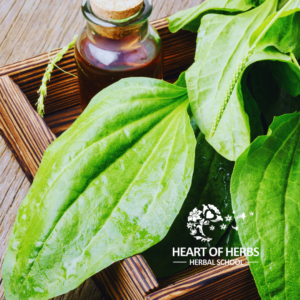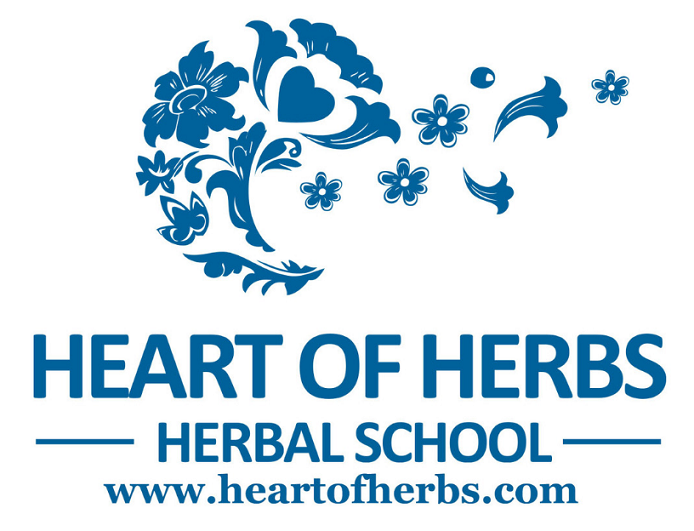Backyard Apothecary Plantain
As we explore these often-maligned plants, we uncover a treasure trove of culinary and medicinal possibilities that await just outside your back door. From dandelions with their vibrant leaves and sunny blooms to the earthy flavor of purslane, each weed tells a story of resilience and adaptability. These resilient greens not only enrich our gardens but also offer us the gift of nourishment and healing, reminding us that nature’s simplest creations can hold profound benefits. So let’s embrace these wild neighbors and discover how they can elevate our plates and our well-being, transforming our gardens from ordinary to extraordinary, one weed at a time.

Let’s start check out out second backyard superstar!
Plantain (Plantago major)
Next on our list is plantain, and no, I’m not talking about the banana-like fruit. This is Plantago major, a low-growing, broad-leafed plant that’s probably growing between the cracks in your driveway right now.
It’s right there, at your fingertips!
Medicinal Properties
Plantain is an incredible herb for skin health. It’s anti-inflammatory and antimicrobial and excellent for soothing insect bites, cuts, and rashes. Crush the fresh leaves and apply them directly to the skin as a poultice. Internally, plantain can be used to support digestion and heal the gut lining, making it a great herb for conditions like leaky gut or irritable bowel syndrome.
Wound Healing
Plantain leaves have potent anti-inflammatory and antimicrobial properties, making them excellent for treating cuts, scrapes, insect bites, and rashes. They help draw out toxins and speed up the healing process.
Soothing Skin
Digestive Health
Plantain has demulcent properties, meaning it forms a soothing film over mucous membranes, helping to protect and heal the digestive tract. It’s used for conditions like gastritis, ulcers, and irritable bowel syndrome (IBS).
Respiratory Support
Anti-inflammatory
It reduces inflammation, both externally and internally, making it useful for a variety of inflammatory conditions.
Culinary Uses
In the kitchen, plantain leaves can be eaten raw when they’re young and tender or cooked like other leafy greens. The seeds can be harvested and used like a mini psyllium husk, which is excellent for fiber intake.
Fun Fact
Plantain was known as “White Man’s Footprint” by Native Americans because it seemed to spring up wherever European settlers went due to its seeds hitching a ride on their shoes and animals.
Interested in purchasing any herbs? You can find them at Mountain Rose Herbs.
Disclaimer
Disclaimer Blog
The information presented on the Heart of Herbs Herbal School/Demetria Clark websites is for educational purposes only. Heart of Herbs Herbal School/Demetria Clark Education LLC makes neither medical claims nor intends to diagnose or treat medical conditions. Links to external sites are for informational purposes only. Heart of Herbs Herbal School/Demetria Clark neither endorses them nor is in any way responsible for their content. Readers must do their own research regarding the safety and usage of any herbs, recipes, or supplements.
Affiliate Disclosure
Some posts contain affiliate links. When you click on these and make a purchase the cost is the same for you, but we earn a small commission that helps me to provide scholarships to students. We only promote products that we know our clients have liked themselves.
Heart of Herbs Herbal School is a Amazon affiliate. As an Amazon Associate, we earn from qualifying purchases.
